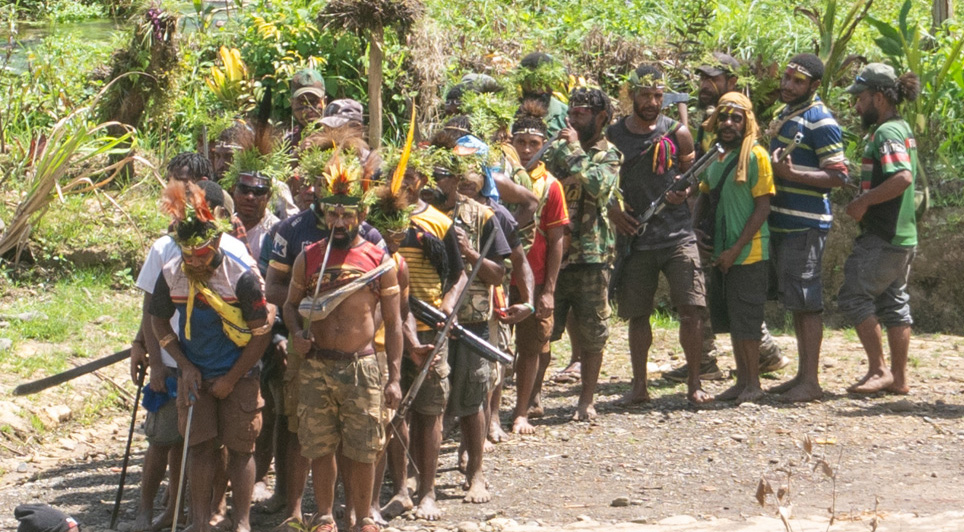I’m on a short tour in the Papua New Guinea Highlands
| I‘ve dutifully attended various cultural demonstrations of Traditional Highland Customs.
These included things like the Huli Wigmen who use spells to grow out their hair and then make ritual wigs from it; the ghostly Mudmen who wear heavy clay masks to scare off enemies; various spirit dances; the use of spirits to hunt down a pig thief; etc.
The guides and the locals freely admit that these are only tourist demonstrations, showing the Old Traditions, and that no-one actually does this for real anymore. I also strongly suspect that like certain other Old Highland Traditions (ahem) they may have been enhanced over time.
I did joke a couple of times with the performers that they should visit Scotland and see our Old Highland Traditions too!
A couple of the performances were in the form of short plays. The best of these was definitely the Mudmen, who acted out “ghostly” figures sneaking up on invaders and chasing them off. Both the masks and the click-click of bamboo “claws” were used to great effect! |
   |
The PNG Highlands vary a lot. I’ve been in both the relatively modern Mount Hagen area and the rather wilder Hela province, near Tari.
Hela Province is in the State Department’s “Do Not Travel” category as “there is a heightened risk of civil unrest from tribal violence throughout the region”. I was with experienced guides and saw no trouble. But from chatting with the guides, it did come across as an area where it is still considered fairly normal to use violence to solve disputes. Afterwards, things can be damped down by paying compensation (in cash or pigs)
We passed an organized chanting/marching squad of men that I was told was collecting money from the local community to pay compensation for an inter-tribal killing. Looking closely, they were mostly carrying machetes and a couple were carrying rifles. Hmm. On the road we passed a couple of informal checkpoints which were quietly reviewing incoming vehicles. Fortunately no one seemed at all interested in a random foreign tourist.

“Gathering contributions to compensate for a killing”
Because Hela is a bit of a backwater, it actually preserves more of the old day-to-day lifestyle. For example, farming is handled entirely differently from the Mount Hagen area. So I’m glad I got to see both areas.
 I’m visiting the Bandhavgarh National Park, in Madhya Pradesh, India. The park is famous for its tigers. There’s a good chance you’ll see one over the course of a multi-day visit, but of course there’s no guarantee.
I’m visiting the Bandhavgarh National Park, in Madhya Pradesh, India. The park is famous for its tigers. There’s a good chance you’ll see one over the course of a multi-day visit, but of course there’s no guarantee.














